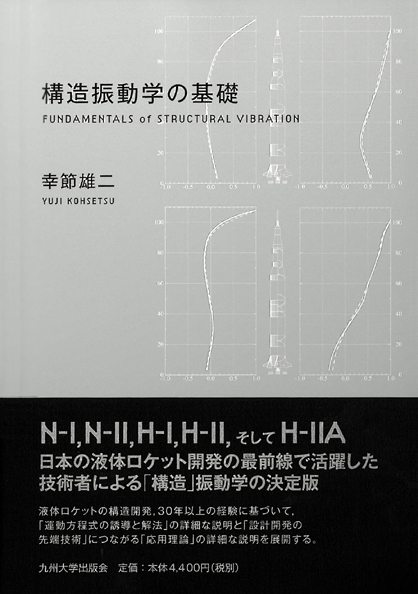Theoretical Advances and Applications in Operations Research Modeling Non-normal Phenomena
内容紹介
本書は,オペレーションズリサーチ分野での最新研究結果を収録した研究論文集であり,特に非確実性下での非正規環境におけるモデリング手法を取り上げている。内容は確率理論から,金融工学,バイオ統計学まで,多岐にわたっており,非正規モデリングにおける国内外の最新結果を記し,理論モデルだけではなく,数値例やシミュレーション結果,図表等を用いながら研究成果を示している。
目次
Preface
Chapter 1 Transmitting an Animal Infection to a Human Population . . . . . Joe Gani and Randall J. Swift
1.1 Introduction
1.2 A Deterministic Model for Animal to Human Infection
1.3 A Simple Stochastic Model for Fixed N Animal Infectives
1.4 An Approximate Stochastic Model for Time Dependent Animal Infectives
1.5 Concluding Remarks
Chapter 2 On the Mode of a Convolution Density Function of the Scaled Normal and Pearson Type VII Distributions . . . . . Kangrong Tan
2.1 Introduction
2.2 Convolution Density Function of the Pearson Type VII and the Normal Distributions
2.2.1 Convolution of the Pearson VII and the Normal Distributions
2.2.2 Convolution of a Student t and a Normal
2.3 Numerical Experiment
2.4 Concluding Remarks
Chapter 3 Assessing Similarity of Two Survival Functions Based on Censored Data and the Trimmed Mallows Distance . . . . . Yingchun Luo, Xianming Tan and Dongsheng Tu
3.1 Introduction
3.2 Definition of the Similarity of Survival Functions Based on the Trimmed Mallows Distance
3.3 Empirical Trimmed Mallows Distance and Its Asymptotic Distribution
3.4 Bootstrap Tests for Similarity Hypotheses
3.5 Simulation Studies and Application to Data from a Clinical Trial
3.6 Conclusions and Discussion
Chapter 4 Modeling Non-normal Phenomena Using a Mixture Distribution . . . . . Kangrong Tan
4.1 Introduction
4.2 Properties of a Mixture Distribution
4.2.1 Methodology of Mixture Distributions
4.2.2 Some Properties of Mixture Distributions
4.2.3 Generating Random Numbers Based upon a Mixture Distribution
4.2.4 Estimation of Parameters and Weights
4.3 Monte Carlo Simulation Based on Mixture Distributions
4.3.1 Evaluating the VaR
4.3.2 Particle Filtering with Non-normal Noise
4.4 Approximation of Returns Distribution Based on the Mixture Distributions
4.4.1 Conventional Distributions
4.4.2 Numerical Results
4.5 Conclusions
Chapter 5 Analysis of the Tail Distribution of Network Link Delays Using Importance Sampling . . . . . Kangrong Tan and Shozo Tokinaga
5.1 Introduction
5.2 Network Tomography and Its Estimation
5.2.1 Network Tomography and Link Delay
5.2.2 Pseudo Likelihood Estimation
5.2.3 The PLE Algorithm
5.3 Network Topology Estimation Based on the GP
5.4 Importance Sampling for Tail Distributions
5.4.1 Rare Events and Importance Sampling
5.4.2 Determining the Importance Function
5.5 Numerical Applications
5.5.1 Estimation for Artificially Generated Delays
5.5.2 Improved Estimation by IS
5.5.3 Other Network and Delay Distributions
5.5.4 Delays with the Erlang Distribution
5.6 Concluding Remarks
Chapter 6 Approximating a PDF with a Mixture Distribution and Its Application to Tail Distribution Analysis . . . . . Kangrong Tan and Shozo Tokinaga
6.1 Introduction
6.2 Approximation of the p.d.f. Using the GA
6.2.1 Why Use a Mixture Distribution ?
6.2.2 GA-based Optimization
6.2.3 Analysis of Tail Distribution
6.3 Improved Tail Estimation by IS
6.3.1 Basics of IS
6.3.2 Importance Function
6.4 Numerical Experiments
6.4.1 Stock Returns
6.4.2 Tail Estimation Using IS
6.5 Conclusion
Chapter 7 Estimating Firm Status Based on the Statistical Properties of Stock Ranges . . . . . Kangrong Tan and Shozo Tokinaga
7.1 Introduction
7.2 Order Statistics
7.3 Comparison of Statistical Properties of Returns and Ranges
7.3.1 Descriptive Statistics
7.3.2 Comparison of ACFs
7.3.3 Fractality in Stock Ranges
7.4 Applying Fractality to Estimate the Status of a Firm
7.4.1 Kernel-based Discriminant Analysis
7.4.2 Numerical Applications
7.5 Concluding Remarks
Chapter 8 Distribution Approximation Based on the Tsallis Diffusion Process . . . . . Kangrong Tan and Shozo Tokinaga
8.1 Introduction
8.2 The Tsallis Anomalous Diffusion Process
8.2.1 Tsallis Entropy and the Fokker-Planck Equation
8.2.2 GA-based Parameter Optimization
8.3 Applications to Stock Markets
8.3.1 Evolution of Daily and Intradaily Returns
8.3.2 Evolution of Distributions over Time Spans
8.4 Concluding Remarks
Chapter 9 Suppression of Fluctuations in Predictions of Particle Filtering with the State Equation Approximated by Genetic Programming . . . . . Shozo Tokinaga and Kangrong Tan
9.1 Introduction
9.2 Summary of PF State Estimation and GP-based Approximation
9.2.1 Estimation of True States Based upon Observed Data
9.2.2 Basics of the PF
9.2.3 GP-based Equation Approximation
9.2.4 Basic Functions Used for Approximation
9.3 Model Setting and Suppression of Fluctuations
9.3.1 Model W and Its State Estimation
9.4 Numerical Results
9.4.1 State Estimation and Supression for Artificial Data
9.4.2 Application to Real Market Data
9.5 Concluding Remarks
Chapter 10 Bond Rating Based on Fuzzy Inference with Membership Functions Tuned by the Genetic Algorithm . . . . . Kangrong Tan and Shozo Tokinaga
10.1 Introduction
10.2 Fuzzy Inference
10.2.1 Optimization of Weight
10.2.2 Discretization of Inference Result
10.2.3 GA-based Membership Function Optimization
10.3 Bond Rating Based on Fuzzy Inference
10.3.1 Bond Rating
10.3.2 Selection of Financial Ratios
10.3.3 Discretizing the Bond Rating Categories
10.4 Numerical Results
10.4.1 Case I (exclusive data)
10.4.2 Case II (partly using same data)
10.4.3 Comparison with Other Methods
10.5 Conclusion
Chapter 11 The State of the Art of Simulation Approaches . . . . . Kangrong Tan and Shozo Tokinaga
11.1 Introduction
11.2 Simulation Approaches
11.2.1 Monte Carlo Methods
11.2.2 Quasi-Monte Carlo Methods
11.2.3 Artificial Intelligence Methods
11.3 The MCMC Method
11.3.1 Bayesian Inference
11.4 Simulation Software
11.4.1 Released Software Packages
11.4.2 Building Programs
11.4.3 Restrictions on Software and Hardware
11.4.4 Some Solutions to the Restrictions
11.5 Summary
Chapter 12 A Heuristic Type of SDEs and the Resulting Class of Continuous-time First Order Markov Processes with Non-negative Integer-valued Margins . . . . . Rong Zhu
12.1 Introduction
12.2 Continuous-time First Order Markov Processes with Non-negative Integer Margins Based on Expectation Thinning
12.3 The Heuristic SDE and Resulting Continuous-time First Order Markov Processes
12.3.1 Independent Increment Processes
12.3.2 The Generalized Ornstein-Uhlenbeck SDE
12.3.3 Heuristic Solution to the Generalized SDE
12.3.4 Some Resulting Cases
12.3.5 Working Tool to Develop Models for Count Data Time Series
12.4 Discussion
Index
著者紹介
譚 康融(たん こうゆう)/Kangrong Tan
久留米大学経済学部教授。
1987年,中国・復旦大学計算機科学学部情報科学科卒業。
1999年,久留米大学経済学部講師。
2000年,九州大学大学院経済学研究科博士後期課程修了。博士(経済学)。










